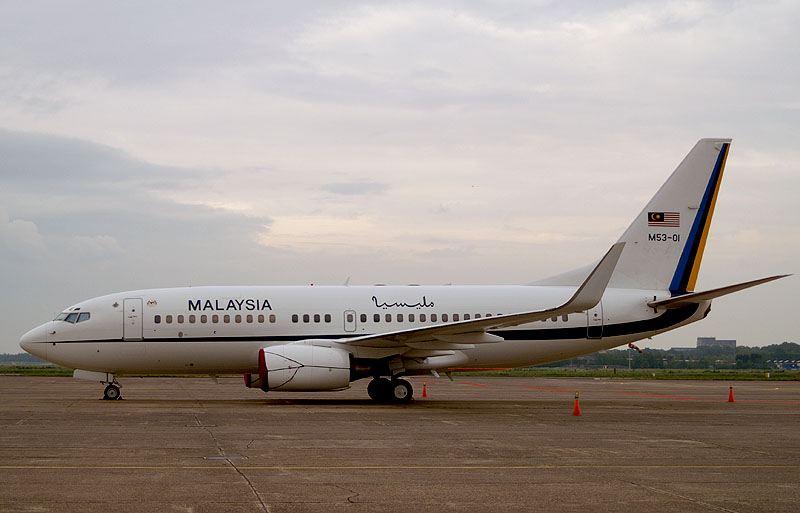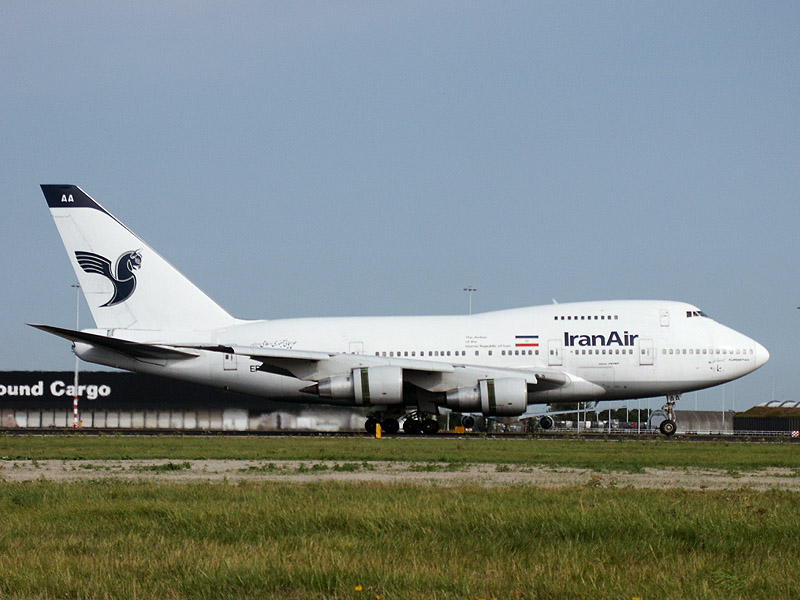
| The Boeing 737 is a popular short-to-medium range commercial passenger jet aircraft, with a few military users and is continuously manufactured by Boeing Commercial Airplane since 1967. Over 5.000 have been sold since its introduction in 1967, more than any other commercial airliner.
Military variants
Boeing T-43 The T-43 based on the 737-200 was originally procured for the navigation training role, with a cabin given over to navigator stations. Some aircraft were subsequently converted for transport use, and the type redesignated CT-43 to reflect the new tasking. Boeing 737-200 Surveiller The main features of this maritime reconnaissance variant are two blade antennas on the upper fuselage forward of the fin, each 4,87 meter in length. These serve a Motorola SLAMMR (side-looking airborne modular multi-mission radar. Which can spot a small ship in heavy seas at a range of 185 km from an altitude of 9.150 meters. Three are in services with the Indonesian Air Force. Boeing 737-200 special mission The Boeing 737-200 Special Mission is capable of performing the following missions: Signal Intelligence (SIGINT), Image Intelligence (IMINT), Tactical Electronic Support, Maritime Patrol, and Airborne Early Warning (AEW) and Control. Operator stations to operate the multi-mission systems have been installed onboard the aircraft:
Final development stages and a certification of the “Flight Guard” system are due to be completed within a short period of time, which will make the “Flight Guard” system the first Aircraft Self-protection System for commercial aircraft. The military version of this system is already installed in airplanes and helicopters of various air forces throughout the world. IAI’s Bedek Aviation Group performed the installations and certification of the aircraft. IAI’s Engineering Division performed the aircraft’s engineering modifications. Boeing C-40A Clipper The BBJ’s airframe also forms the basis for the convertible passenger/freighter variant of the 700, the 737-700QC, which has been ordered by the US Navy as the C-40A Clipper (to replace the Douglas DC-9 based C-9B). The C-40 first flew on April 17, 2000. The naval aircraft can be converted to carry 121 passengers, or 3 pallets of cargo plus 70 passengers, or 8 pallets of cargo only. The 737-700C variant features a 3,35 x 2,13 m cargo door on the right side of the aircraft and cargo handling systems in the cabin and a strengthened floor. These aircraft are currently (2002) based at Naval Air Station Fort Worth, Texas (VR-59) and Naval Air Station Jacksonville, Florida (VR-58). Project Wedge tail The AEW&C system combines the new high-performance Boeing 737-700 increased gross weight (IGW) aircraft with the Northrop Grumman Multi-role Electronically Scanned Array (MESA) radar. Included in the platform are an advanced identification friend or foe (IFF) system; an expanded, passive surveillance system; a flexible, open-system architecture and a highly effective self-defense capability. Using the latest sensor technology, Northrop Grumman’s 360-degree steer able beam MESA radar is able to track air and sea targets simultaneously and can help the operator track high-performance aircraft while continuously scanning the operational area. More than 1500 hours of wind tunnel testing have demonstrated the compatibility of the aircraft and the radar. The Boeing team was awarded an Initial Design Activity contract by the Australian Defence Force in December 1997. As part of that contract, the team worked on a design solution to meet the Royal Australian Air Force (RAAF) requirements for an AEW&C system. In July 1999, the Boeing team was selected as the preferred tenderer for Project Wedge tail. A development and acquisition contract was signed in December 2000. It provides for four 737 AEW&C systems with options for up to three additional systems. The contract also provides for ground-based support segments for flight and mission crew training, a mission support segment and other system support facilities and spare parts. The first two aircraft are expected to be delivered to the Commonwealth of Australia in 2006. Boeing P-8A Multi-mission Maritime Aircraft The Boeing P-8A Multi-mission Maritime Aircraft (MMA) combines superior performance and reliability with an advanced mission system that ensures maximum interoperability in the future battle space. A derivative of the Next-Generation 737-800, the P-8A is being developed for the U.S. Navy by a Boeing-led industry team that consists of CFM International, Northrop Grumman, Raytheon and Smiths Aerospace. P-8A is a long-range anti-submarine warfare, anti-surface warfare, Intelligence, Surveillance and Reconnaissance aircraft capable of broad-area, maritime and littoral operations. The Navy plans to purchase 108 P-8As to replace its fleet of P-3 aircraft. The Boeing-led team, which includes CFM International, Northrop Grumman, Raytheon and Smiths Aerospace, will produce five test aircraft during the program’s System Development and Demonstration phase. The first aircraft will be delivered for flight test in 2009 and initial operational capability is slated for 2013. |
Summary April 2005.
Summary April 2005.
Summary April 2005.
Summary April 2005.
Summary April 2005.
Summary April 2005.
Summary April 2005.
|
|||||||||||||||||||||||||||||||||||||||||||||||||||||||||||||||||||||||||||||||||||||||||||||||||||||||||||||||||||||||||||||



Be the first to comment